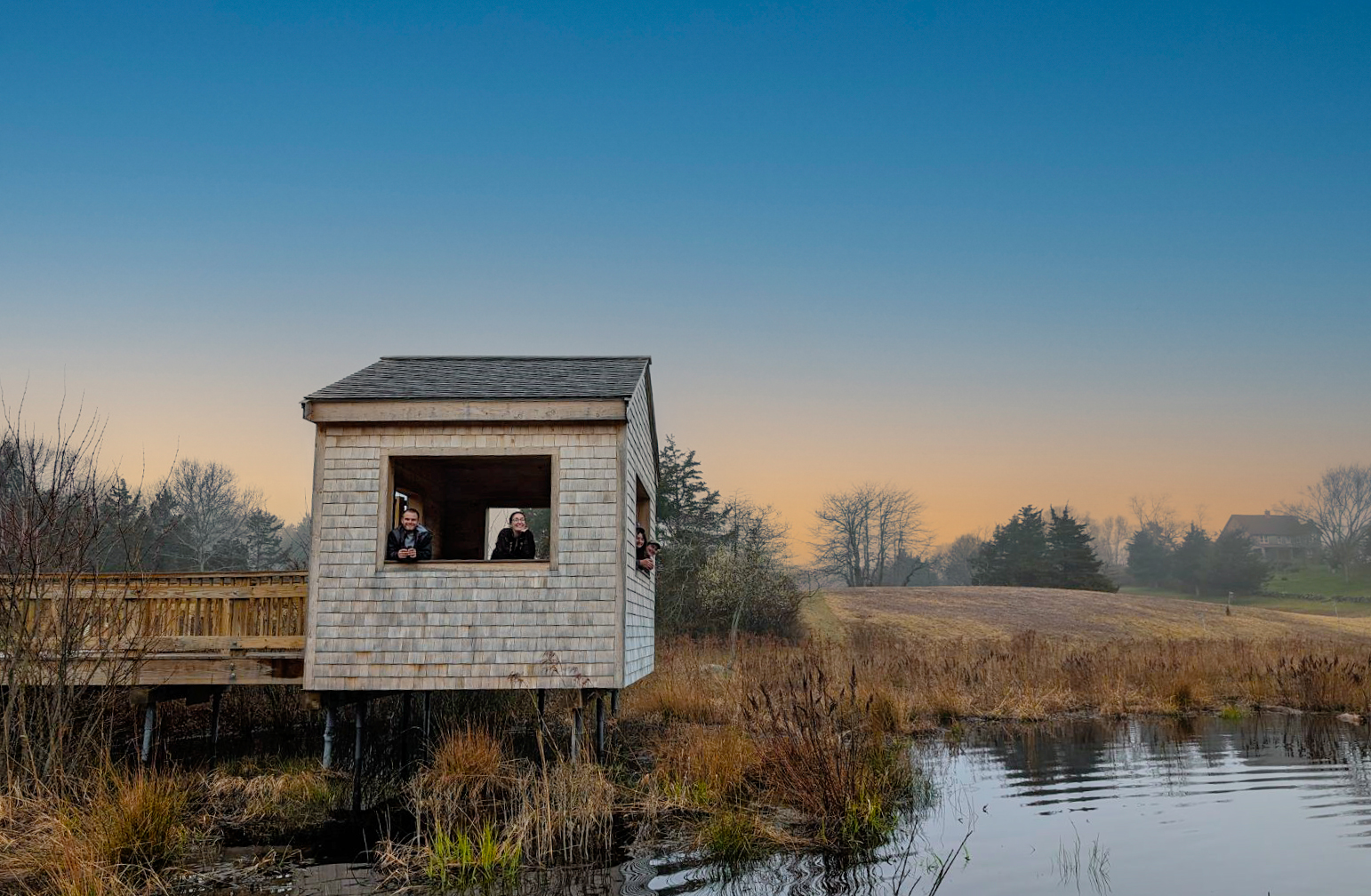This article was written by Ben Goodridge and originally published by The Times Record on October 26, 2016. See the original article here.
A stiff salt breeze blew in off the water last week as Brunswick High School students trudged across the Georgetown mudflats, mud pulling at their boots as the tide crept in. Until high tide shrouded the flats in salt water, the teens spent the morning digging clams from mesh nets and investigating green crab traps at Heal Eddy, Maine’s first soft shell clam farm.
Created by local nonprofit Manomet in conjunction with landowner John A. Holt, Heal Eddy Clam Farm — along with additional farms in Brunswick and Chebeague Island — encourages kids of all ages to come out and explore the grounds. Students get the opportunity to learn about clam farming practices — viewed by many as the future of the clamming industry — as well as the best forms of protection against the growing threat of green crabs.
LILY OLCOTT, daughter of Brunswick High School grant coordinator Susan Olcott, holds up a green crab at the Heal Eddy Clam Farm. BEN GOODRIDGE / THE TIMES RECORD “Georgetown elementary was out here last week, and we hope to get Brunswick High School back out here soon,” said Manomet scientist Ethel Wilkerson.
The Georgetown students recently harvested clams from their own nets, a practice that Brunswick High School will be emulating at one of Manomet’s other clam farms at Maquoit Bay in Brunswick this coming spring.
The nets are designed in a way that protects thousands of clams from green crab predation once the clams are seeded in the flats, allowing them to grow to a harvestable size.
On Thursday, science teacher Rick Wilson brought his students to Heal Eddy to familiarize them with the process.
“We plan on having some nets, too,” said Wilson, who teaches service learning and other science classes at Brunswick High School. “We ordered 10,000 seeds from
Downeast Institute and will have nets like (Manomet’s) with 2,000 clams each. Then we can do density and mortality rate studies as the clams grow.”
It typically takes about two and a half years for seed clams to grow to legal size under the nets. The clams are self-sustaining and require no antibiotics as they grow, easing the pressure and cost of having to wait for a mature, sellable product.
The clams at Heal Eddy were set to be harvested and sold this fall, but the folks at Manomet decided to wait one more year. Wilkerson pointed out that waiting an additional season for the clams to grow in size will not only double their worth, but provide an additional year of scientific studies for this groundbreaking project, such as what the maximum clam density might be for each net.
“There’s no other data out there, so this is an important equation to solve,” said Wilkerson.
Commercial clammer Chris Warner, who has been working with Manomet and landowner Holt on the Heal Eddy project, agrees that farming could ultimately be the future of clamming.
“Other clammers are on board with this,” said Warner, who said that since the farms are placed on “sub-productive zones” where the density of wild clams is low, farming is not a threat to the commercial industry. “It’s all about protecting the generations (of clammers) to come.”
The next generation seemed thrilled to be learning about clams on Thursday, as the students were digging deep holes in the mud and pulling out clams amid laughter and an astute desire to learn. Wilson pointed out the importance of understanding the partnership that makes Manomet’s clam farms possible.
“We are jazzed about the relationship between scientist, landowner and commercial digger,” said Wilson. “It’s refreshing to look at how policy can move forward in a constructive way given the current political atmosphere. The kids get to see people that are coming from different areas and actually moving in the same direction.”
Wilson is excited to get the kids back out in the spring to test their own nets at Maquoit Bay.
“We are developing a vision for second semester,” said Wilson. “Then we’ll continue on next year. Eventually we’ll figure out a five year vision.”





 Back to all
Back to all